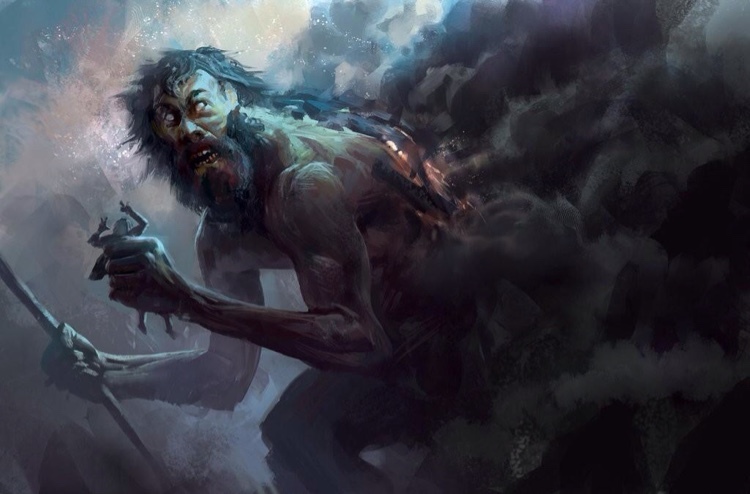The Shivlinga brought by the sons of Danu to Ireland
Tuatha de Danann (pronounced Thoo-a day Du-non) is translated as ‘tribe of Danu.’ Scholars are agreed that Danu was the name of their goddess, most probably Anu/Anann. They were a race of God-like people gifted with supernatural powers, who invaded and ruled Ireland over four thousand years ago.
In Vedic mythology the Danavas were a race descending from Daksha. The Danavas were the sons of Danu, who in turn was a daughter of Daksha. Danu is connected with the waters of heavens and she is probably associated with the formless, primordial waters that existed prior to the creation.
The Book of Invasions (Lebor Gebála Érénn compiled c.1150)
claims in a poem that they came to Ireland riding in “flying ships” surrounded
by “dark clouds.” They landed on Sliabh an Iarainn (the Iron Mountain) in Co.
Leitrim, where they “brought a darkness over the sun lasting three days.” There
is a lovely line which illustrates perfectly the bewilderment felt towards
these conquerors;
 |
| Tuatha de Danann |
“The truth is not known, beneath the sky of stars,
Whether they were of heaven or earth.”
They certainly looked very different to the small, dark
native peoples of Ireland at that time. The Danann are generally described as
tall with red or blonde hair, blue or green eyes, and pale skin.
Shortly after their arrival they defeated the Firbolg at the first battle of Mag Tuireadh.
Know about Firbolg
 |
| Firbolg |
The Firbolg people are primordial inhabitants, or early gods, of Ireland. The third wave of invaders, they conquered Ireland and defeated the Fomorians.
 |
| Fomorians |
In the second battle of Mag Tuireadh they fought and conquered the Fomorians, a race of giants who were the primordial inhabitants of Ireland.the Fomorians are a race of demonic giants, ancient
occupants of Ireland (or sometimes mentioned as a mythical, prehistoric people
who raided and pillaged Ireland from the sea). The first to invade Ireland were
the Partholons, but after many battles the Fomorians afflicted them all with
plague. After them came the Nemeds, who in their very first battle were
defeated and enslaved. The third wave of invaders, the Firbolgs, were more
successful and they subdued the Fomorians and managed to live peacefully with
them.
The Tuatha Dé dealt more subtly with the Fomorians than with the Firbolg, and gave them the province of Connacht. There was also some marrying between the two races.
The Tuatha Dé themselves were later driven to the underworld by the Milesians, the people of the fabulous spanish king Milesius. There they still live as invisible beings and are known as the Aes sidhe. In a just battle, they will fight beside mortals. When they fight, they go armed with lances of blue flame and shields of pure white.
The Shivlinga they brought
In County Meath, Ireland, on the Hill of Tara sits a mysterious stone known as the Lia Fáil (Stone of Destiny). According to The Annals of the Four Masters, an ancient document written by Franciscan Monks between 1632-1636 AD, this stone was brought to Ireland by the Tuatha Dé Danann. Some speculate it was they who brought the power to make bronze to Ireland. They were the main deities of pre-Christian Gaelic Ireland.
They are said to have ruled Ireland from 1897 B.C. to 1700 B.C. having arrived from the coast on ships. The Christian monks viewed the stone as a pagan stone idol symbolic of fertility. This stone was so important that it was used for the coronation of all Irish Kings up until 500 AD. The goddess Danu in European tradition was a river goddess.
In some Irish texts her father is said to be Dagda (the good god), a father figure in Irish tradition.The Vedic tradition also has a goddess Danu, the daughter of Daksha, wife of Kasyapa Muni, who was a goddess of the rivers. The word Danu in Sanskrit means 'flowing water'.
- Nalanda





Comments
Post a Comment